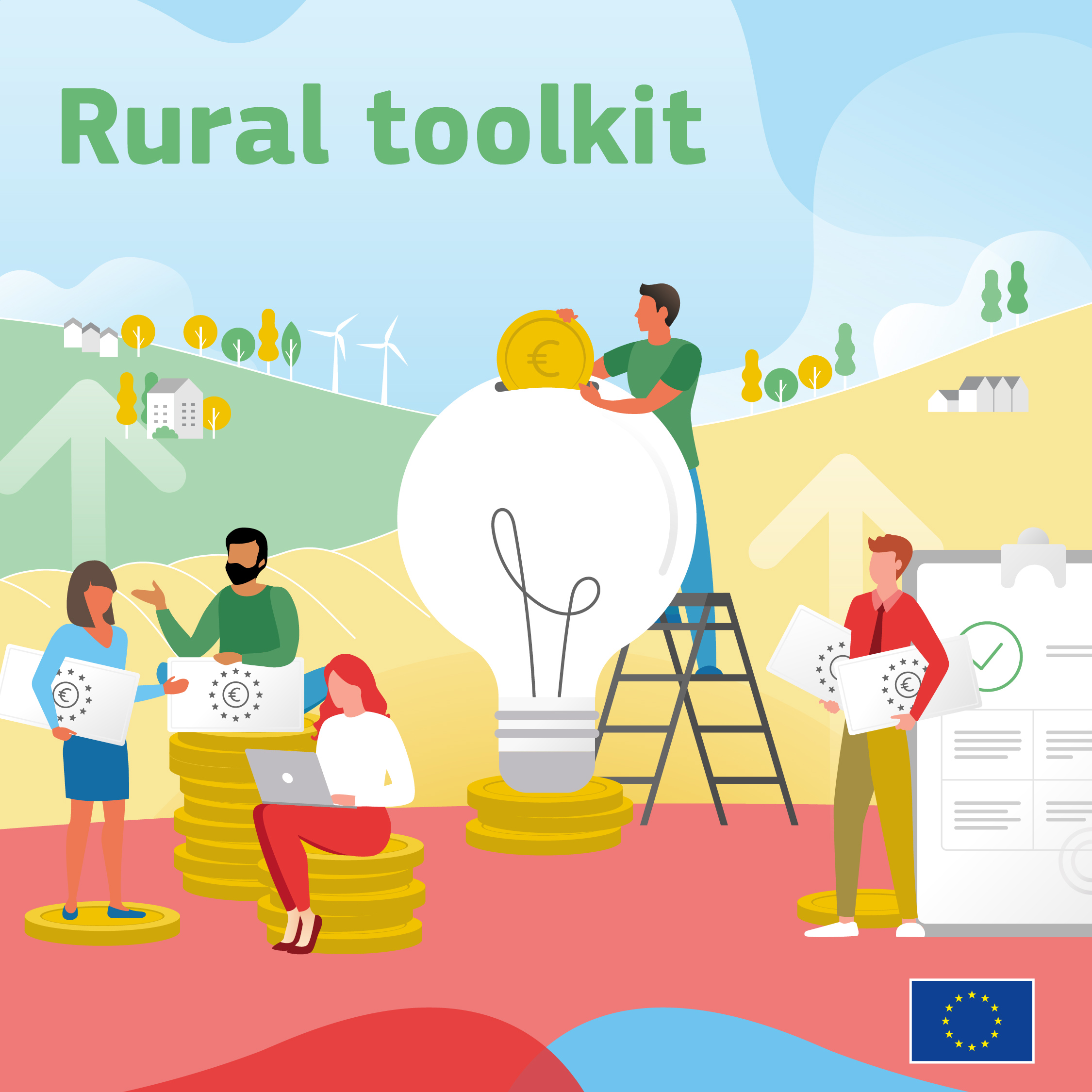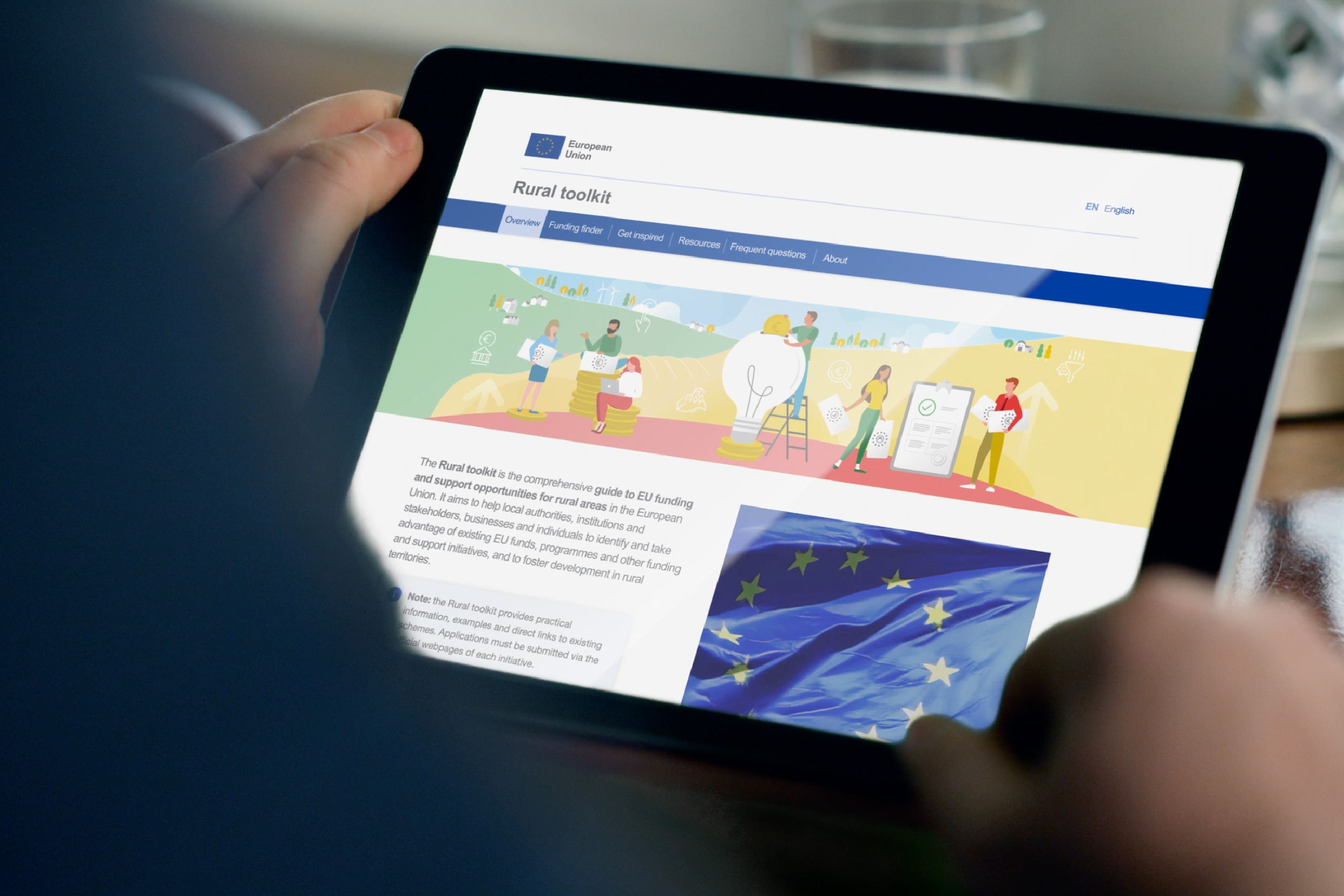
The toolkit was unveiled on 6 February and is part of the EU’s long-term vision for rural areas 2040.
European Commissioner for Cohesion and Reforms, Elisa Ferreira said of the toolkit that: ‘We are one step closer to providing people with the information that they need when it comes to EU funding and the countless opportunities that it presents – to ensure that they, their businesses and regions continue to prosper. People will be free to choose funding that best meets their needs, allowing them to unleash the full potential of rural areas across the EU.’
The Rural toolkit is born out of the initiative of the Joint Research Centre (JRC) and the European Commission’s Directorate-General for Regional and Urban Policy (DG REGIO) , in collaboration with the Directorate-General for Agriculture and Rural Development (DG AGRI).
The toolkit gathers opportunities from 26 EU funds: from the Cohesion Policy and the Common Agricultural Policy to the Horizon Europe and the Recovery and Resilience Facility. It provides a single gateway to EU support for rural areas and, in the words of Marion Eckardt,Vice-President at European LEADER Association for Rural Development (ELARD) “is a go-to place for me when developing our local area. It encompasses so many possibilities in one place, which makes it very useful for me as a LAG-manager and supporter of local initiatives”.
A common vision
Rural areas cover 83 % of the EU and are home to 137 million people, or 30 % of the EU’s population. Despite their great diversity, Europe’s rural areas face many common challenges, and they could access many of the same opportunities to overcome these obstacles.
This is why, in shaping its vision for rural areas, the EU sought the views of rural communities, farmers, businesses and wider society through a public consultation. The process led to the identification of 10 goals. A Rural Action Plan and a Rural Pact were developed to shape the vision for rural areas into a reality – with the help of dedicated EU funds.
The Action Plan encompasses 30 ways to ensure stronger, connected, resilient and prosperous rural areas. The Rural Pact, in turn, is a framework for cooperation between national, regional, and local authorities; civil society; businesses; and academics, to reach the goals.
Identifying opportunities
While there is a myriad of EU funding opportunities to support efforts to achieve the vision, finding the right one can be hard.
The tool has an interactive funding finder that lets beneficiaries tailor their search based on several criteria, such as the organisation they represent, their proposed activity and the type of support they want.
This allows them to narrow their selection down to the most suitable options. The toolkit provides exhaustive information on the programmes, grants, subsidies that fit their needs best. The tool equally provides detailed factsheets covering the relevance of each option for rural areas, practical details, links to calls and contact points. Rui Rafael, Technical Secretary for Rural Development, Mainland Portugal’s Managing Authority of the Common Agricultural Policy Strategic Plan, said of the toolkit that it “could be extremely useful for all socio-economic actors in the rural world to continue fighting depopulation and lack of investment in a wide area of the country.”

Further assistance comes in the shape of a resources section containing guides, reports, and manuals on EU funding opportunities for specific sectors: broadband, culture, education, energy, environment, and tourism. The section also offers guidance on integrated local development approaches to help communities to design and implement projects.
Additional background material can be accessed on pages listing frequently asked questions and explaining the reasons behind and purpose of the toolkit. The toolkit offers automatic translations in all EU languages. Tom Jones, president of ERCA, European Rural Community Alliance said that the rural toolkit “is user friendly and with different entry pathways” since “Many rural organisations undertake different projects and are composed of several representations but often without significant core capacity”.
Inspiring examples
An important feature of the toolkit is an interactive map, which can be used to explore case studies and inspiring stories. Users can gain insights into how EU funds and support have been deployed successfully in rural areas across Europe and find out how to take advantage of these opportunities.
One inspiring story is that of the Biovilla cooperative in Portugal. Biovilla developed nature tourism, educational programmes and landscape restoration in Arrábida Natural Park. It used a combination of private finance and EU funds, including the European Regional Development Fund, the European Agricultural Fund for Rural Development (EAFRD), the European Social Fund+ and Erasmus+.
Founded in 2010, the cooperative runs a 12-bedroom guest house, a restaurant, a food shop and event spaces. The buildings are constructed from recycled wood and fitted with solar panels and a system for reusing rainwater. All the food served to guests is organic and around a quarter of it is grown on the property.
Social and educational programmes include environmental activities, vocational retreats and workshops on subjects like bioconstruction and permaculture. Among the activities for restoring the local landscape are regenerative agriculture and reforestation.
Annually, some 10 000 people stay at Biovilla or take part in its activities. The cooperative currently has six full-time employees and three interns, as well as volunteers and exchange participants. It has trained more than 80 unemployed people in regenerative sustainability practices.
Wooden toys from Romania
Another example is Bumbu Toys, a company that makes wooden toys in the village of Bran, Romania. Noticing a lack of good, reasonably priced wooden toys on the market, master woodworker Vitalie Bumbu saw a chance to create a business in which he and his wife, Marina, an artist, could combine their skills.
The EAFRD enabled the couple to buy modern, high-performance equipment for their workshop. As a result, the company now produces a variety of high-quality wooden toys that encourage children’s creativity, emotional development and learning through play. The toys are developed based on advice from a paediatric psychologist.
Bumbu Toys has helped to diversify the local economy in Bran and created jobs. The workforce has grown from 6 to over 20. The toys are not only popular in Romania but have been a hit worldwide: the firm exports to countries including Australia, Indonesia, the Netherlands, Singapore and the USA.